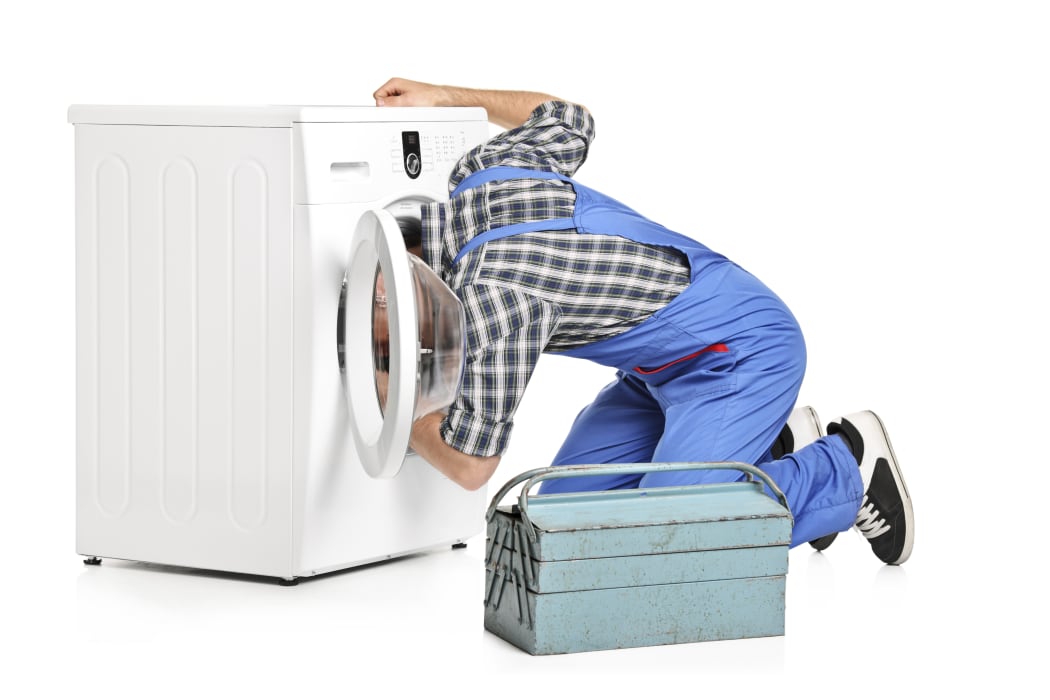A new study finds the vast majority of consumers want to get broken electrical appliances fixed but are frustrated by how difficult and pricey it is to do so.
According to research conducted by Consumer NZ as part of its #BuiltToLast campaign, 98 per cent of respondents thought they should be able to get their washing machines and dishwashers fixed.
Most said appliance repairs cost too much, and that manufacturers and retailers should be responsible for recycling dead appliances.

washing machine Photo: supplied
“People don’t like buying an appliance that only lasts five years and then they have to throw it away and it goes into landfill,” Consumer NZ chief executive Jon Duffy told Nine to Noon.
People want to be able to take their appliance to a repairer specialist or do a repair themselves, he says.
But there are structural problems stopping this from happening.
“At a high level it is the way our markets are structured, so manufacturers are incentivized to get us to buy ever more products.”
The repair industry has also contracted, he says.
“We have a repair industry that has shrunk over time because of the way products are manufactured and the unit cost of taking an item in to get it repaired is higher.”
Repairers also face warranty obstacles, Duffy says.
“The problems that those repairers are facing is black box technology. You’ll be faced with the dilemma as a consumer the repairer will come round and say ‘if I open your iphone up the warranty is null and void because I’ve broken the seal on it.”
Spare parts are also often not available, he says.
“We’ve recently done some testing on stick vacs, which are all the rage at the moment, and that threw up some really interesting results. Particularly around battery life.
“What we’re finding is for some brands they are lasting three to four years and then the batteries are crapping out. Until very recently for some brands you couldn’t even buy a replacement battery. You’d pay over $1000 for one of these vacuum cleaners, get three or four years out of it and you’ve got to throw it away - and that’s crazy.”
He says manufacturers should be compelled to state how durable a product is.
“Work out how durable it is and make a representation so that consumers can go to the shop and say I’m interested in performance, price and durability.
“Surveys show 78 percent of consumers will pay a little bit more for an appliance that’s going to last longer.”
In the EU there are regulations insisting manufacturers make spare parts available and international consumer agencies around the world are arguing for a right to repairability, he says.
The Consumer Guarantee Act in New Zealand falls short, Duffy says.
“Because manufacturers aren’t playing ball that’s a signal there needs to be a stronger regulation to force spare parts in to the market.”
“The economics of it mean manufacturers are constantly wanting to sell new products - and they just become junk.”
Durability has been on the decline for years, he says.
“So not only have you got cheaper new products, you’ve got products that aren’t worth as much in the second-hand market.”
While the durability of new products has reduced many old appliances are still going strong, and New Zealanders have been in touch with Consumer NZ with stories of trusty old gear, he says.
“Kenwood mixers are just perennial. These things are built like tanks and they seem to go for ever.
“So many people have inherited a Kenwood mixer from a grandma and they are still going.”
One consumer has an ancient Tellus vacuum cleaner given as a wedding present in 1968 which has never been repaired except for a bit of handy work taping up the hose.
Many also told tales of their trusty Benina sewing machines.
“So many people who were given appliances as wedding presents in the 60s and 70s and they’re still going, it’s remarkable.”

